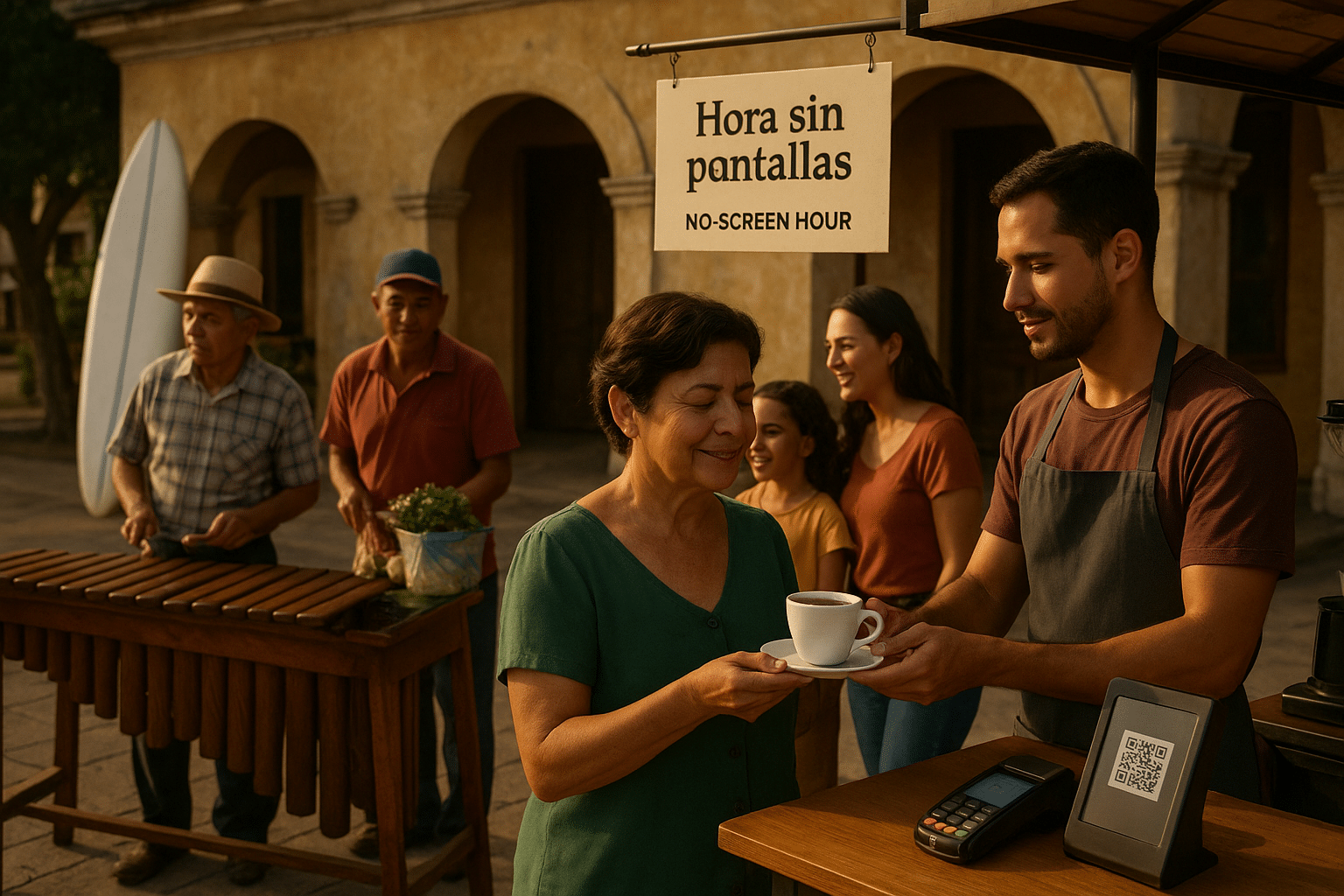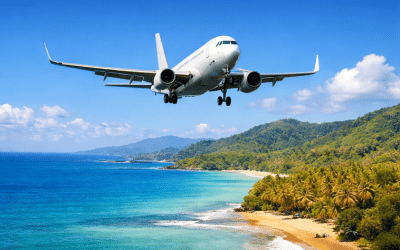Costa Rica’s appeal is intensely human: dawn surf and strong coffee, markets where vendors know your name, marimba in the plaza, galleries after work, and meals that turn neighbours into friends. Across Latin America—and increasingly worldwide—smartphones and social media now mediate many of these moments. The benefits are real: faster bookings, wider reach, smoother payments. Yet the costs are visible too: thinner community bonds, rushed service, distracted teams, and a tourism experience that can feel curated for the feed rather than crafted for the guest. This editorial argues for balance: let technology accelerate operations while keeping culture, service and attention at the centre.
From public squares to private screens
Shared spaces—from town squares to football pitches—once organised daily life and informal trade. Today, the time that used to be spent lingering and talking is often spent scrolling. The result is fewer chance encounters, fewer impulse purchases, and fewer opportunities for young people to absorb stories, skills and manners through participation rather than observation.
Commercial consequences of constant connection
When customers and staff are half-present, commercial performance suffers. Hospitality becomes transactional; retail becomes a price comparison; tours and cultural events compete with notifications. Loyalty weakens because the memory of a place is built on how it felt to be there, not only how it looked online.

Productivity, craft and the workplace
Always-on communication fragments focus. Kitchens, workshops and construction sites need attention and rhythm; interruptions increase errors and elongate training cycles. Mentoring—how craft actually passes from expert to apprentice—requires time, repetition and eye contact. Phones break the spell.
Technology as a bridge, not a barrier
Digital tools are most valuable when they direct people back to people. Use them to document and distribute cultural stories, streamline reservations and payments, and coordinate teams—then hand the stage back to conversation, service and shared experience.
Practical measures for owners and managers
- Define device etiquette for customer-facing roles: Establish clear, written standards—phones away while serving, designated windows for content capture, and a single team device for social media. This protects attentiveness without eliminating digital marketing.
- Design service rituals that reinforce presence: Train greetings by name, eye contact, pacing of courses, and check-backs at meaningful moments. Mystery-shop for human warmth and attention, not only speed.
- Programme the “plaza effect”: Host no-screen hours, craft demonstrations, tastings, live music and children’s games. These events increase dwell time, average ticket, and repeat visits, while strengthening the street’s identity.
- Create fewer, better stories online: Publish one thoughtful post or short film each week that ends with a real call to action—book a tasting, join a tour, attend a performance—rather than a daily filler that adds noise but not trade.
- Invest in deep training and apprenticeships: Run handset-free workshops for safety, craft and consistency. Cross-train staff so they can step in smoothly during peak periods and holiday seasons.
- Measure beyond clicks: Track dwell time, table return rates, repeat visits, referrals, staff retention and net promoter score. These metrics correlate more closely with profitability than likes or impressions.
What citizens and families can do (and why it helps business)
- Keep phone-free rituals: Meals, beach walks and Sunday sodas without screens create longer conversations and additional orders for local venues.
- Adopt a “one-photo then pocket” habit: Capture the memory, then be fully present. Staff notice, service improves, and the moment becomes memorable rather than performative.
- Buy the story, not only the price: Ask where the fish was landed, who roasted the coffee, who made the mask. Paying for provenance sustains skilled jobs and distinctive places.
- Be present travellers: Choose experiences that prioritise interaction—market tours, workshops, community guides. Your spending becomes an investment in living culture.
A balanced day—and a resilient economy
Begin with a surf or a walk in aeroplane mode. Work in focused blocks with scheduled message windows. Lunch at a soda and talk to the owner about today’s produce. Visit a gallery, beekeeper or an artisan and ask about the process. Watch the sunset without filming it. Businesses built on presence earn a loyalty no algorithm can match; communities organised around shared time grow more confident, creative and welcoming.






